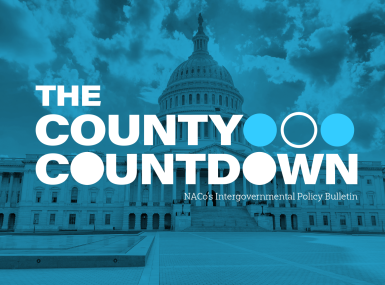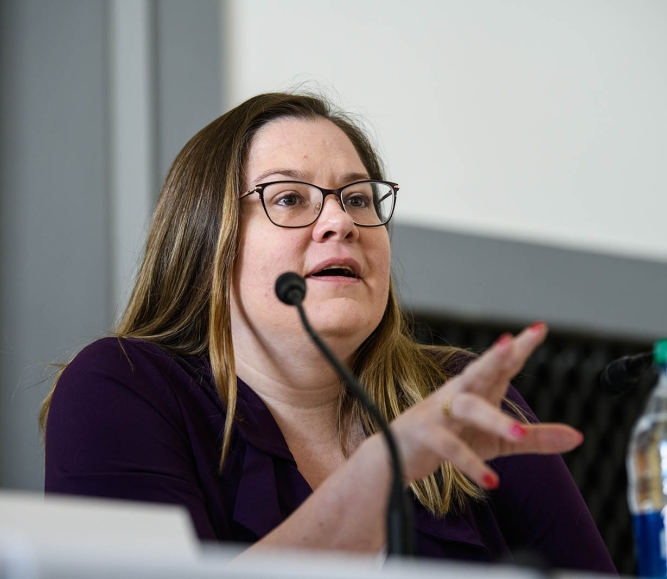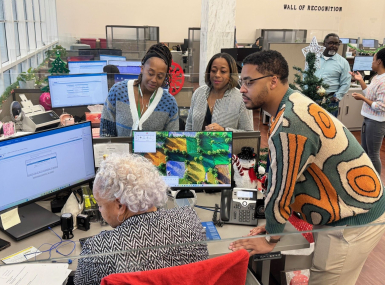Election administrators anticipate continued challenges
Key Takeaways
The days of a quiet year in county election administration are long gone.
Even if years pass and discussions about voting fade to the background, the field itself is changing, with a dizzying shift in prominence and responsibility in the last 25 years.
“After 2000, we had to be IT managers, then after 2016, in the wake of the critical infrastructure designation, everybody had to be a cybersecurity expert, and after 2020 we had to be communication and physical security experts,” said Amy Cohen, executive director of the National Association of State Election Directors.
Cohen joined several professionals representing different facets of election administration for a Dec. 17 discussion at NACo’s Washington, D.C. office.
Panelists considered the 2024 presidential election a success, with few reports of irregularities or issues at polling places that had made the news, often without any corroboration, over the prior four years. Santa Fe County, N.M. Clerk Katharine Clark chalked it up to preparation, even a surplus of it.
“We saw a lot of over-preparedness in this election,” she said.
“We prepared and started earlier than we have any other time because we want to make sure we’re ready for anything, because there was a lot of rhetoric around security.”
Despite record turnover among election officials in prior years, Santa Fe County had five times the number of interested elections workers in 2024 as Clark needed.
“I think there was enough media talking about the need that people basically answered the call,” she said.
Brianna Schletz, executive director of the U.S. Election Assistance Commission, said her organization will continue to focus on voter education and transparency around the process, which she said has helped address citizen concerns.
“There’s a desire in the public for them to understand the process and be involved in it,” she said.
Cait Conley, senior advisor to the director of the Cybersecurity and Infrastructure Security Agency (CISA), said the federal government’s efforts to tighten interagency cooperation and coordination paid off.
“It was absolutely the most complex risk landscape and threat environment we have yet to see in an election cycle,” she said.
That underscored her warnings about complacency in the face of a successful election.
“If you think you can take your eye off the ball because it sounded quiet… it was quiet because we’ve done tremendous work to move the needle in terms of cyber security for election infrastructure.”
Conley noted that a lot of criminal cyber activity is not always attributable to a nation state necessarily, which makes monitoring and protecting against them more challenging.
With the 2024 election past them, panelists were already focused on the coming threats.
Cohen noted that her colleagues were spread thin, worn out and “not feeling the joy in our jobs the way so many of us have,” she said.
She is concerned that the U.S. Postal Service is becoming an increasingly weak link in their role moving ballots, voter registration materials and more.
“I started hearing about issues from my members at the end of last year and I had expected us to have made more progress over the last 12-14 months.”
She cited inconsistent training as a threat.
“If you have inconsistent training about when something is undeliverable… that has downstream effects on voters’ ability to participate,” she said.
Clark noted that safety concerns are making schools less likely to welcome the public onto their campuses on election days, making them less viable as polling places.
She noted, however, that local governments’ enforcement of Americans with Disabilities Act requirements has rendered churches quite compliant and accessible.
Conley said that while artificial intelligence-driven misinformation was not a prominent issue in 2024, she doesn’t expect that to remain the status quo.
“I think the models are getting that much better and I think bad actors’ ability to use them is also getting better,” she said.
“I think it was still new this year. I don’t think malicious actors knew how to integrate it into some of their concept and execution. I think they will be far more proficient in the next federal election cycle and the ones after.”
As the digital threats mount, Conley said that cyber threats could serve as a gateway to physical threats if they aren’t addressed, but she also acknowledged that meeting every threat would be challenging for individual county election offices.
“There is no perfect security solution, but at the end of the day, something is going to be better than nothing,” she said. “I think where we could really use help across the country from county commissions and local councils and state legislatures is realizing that this protection is not free. Collectively as a nation, we need to invest in our security.”
Related News

2024 Clearinghouse Awards: U.S. Election Assistance Commission recognizes county excellence in election administration
The U.S. Election Assistance Commission (EAC) announced the winners of its 2024 Clearinghouse awards, recognizing 32 counties for their election administration practices during the 2024 election cycle.

County Countdown – April 7, 2025
Every other week, NACo's County Countdown reviews top federal policy advocacy items with an eye towards counties and the intergovernmental partnership. This week features a budget reconciliation update, HHS restructuring and more.
County News
Federal funding not reaching county elections departments


